

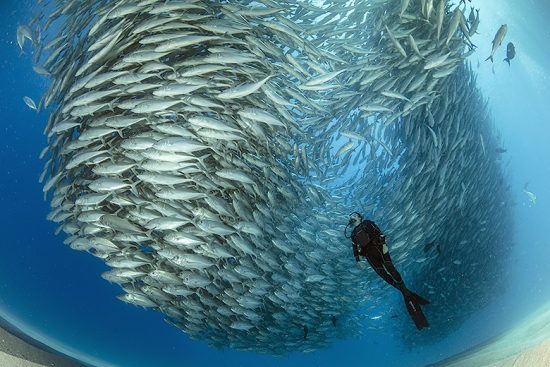
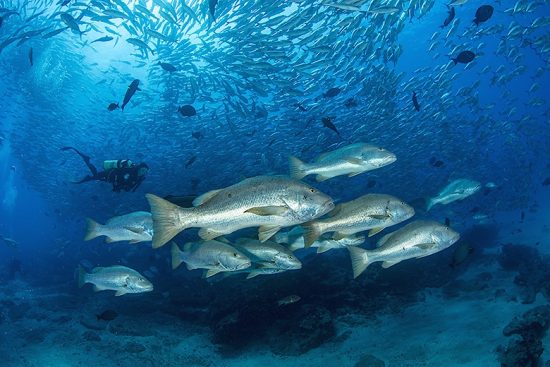
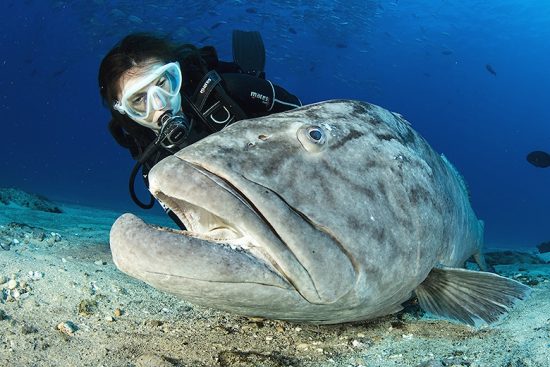
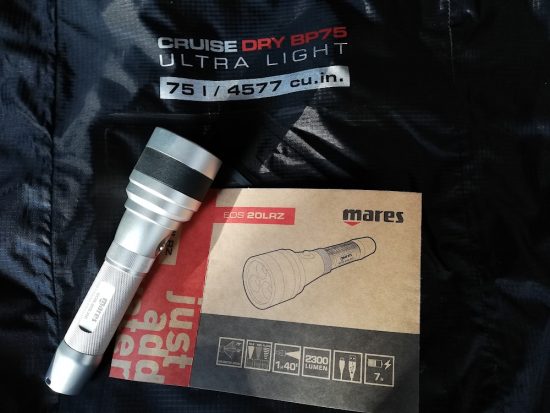
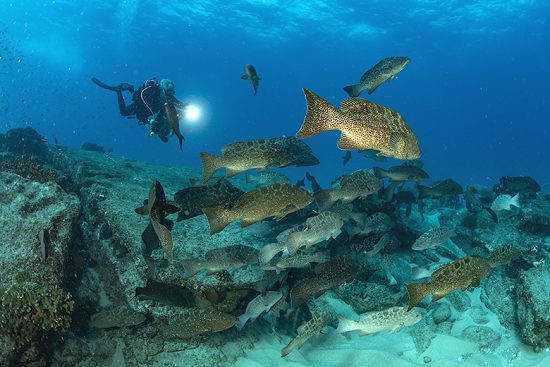
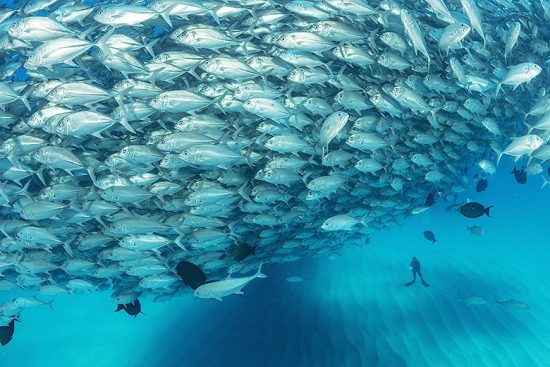
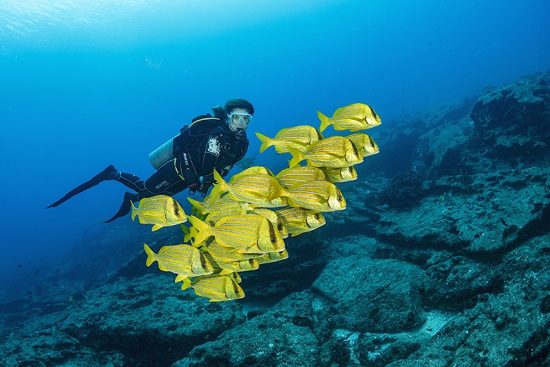
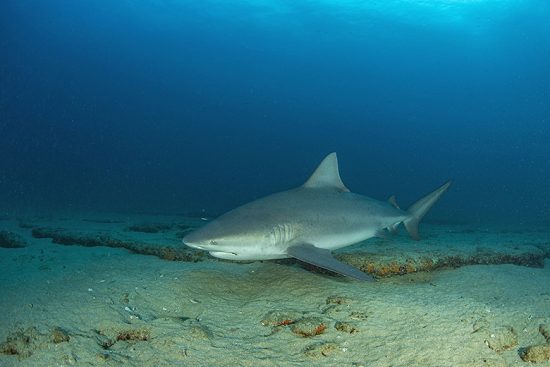
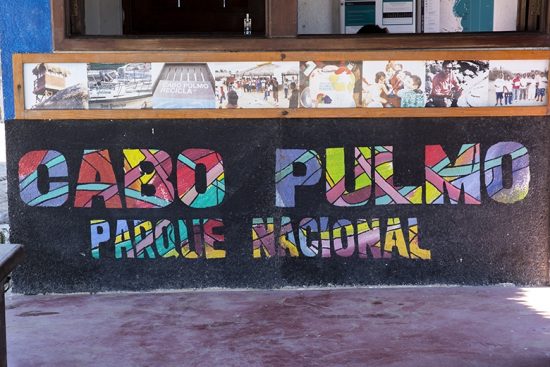
If your diving wish list includes finding yourself finning inside vortexes of different species of fish so dense as to darken the rays of the strong sun from the near-surface, then Cabo Pulmo National Park is a “must-visit” destination.
It is a lovely, wild place thanks to its community that joined forces to rescue the region from neglect, exploitation and pollution. Different to the crowded, noisy Cabo San Lucas or Los Cabos, though distant only a hundred kilometres, Cabo Pulmo is a solar-powered, dusty little village hidden at the end of a bumpy, unpaved road. There are just a couple of sandy roads, a handful of local restaurants (which open when they want), no ATMs, no wifi, no public transport. Generators do exist, but facilities are primarily powered by solar energy. If you need to charge several batteries (computers, cameras, strobes, etc.) remember to do so during the day, as it might be an issue at night.
For us, a “must have” was one of the new rechargeable EOS 20LRZ torches with beam adjustment, a multifunctional switch, rechargeable battery system and great power and autonomy. Also including an innovative temperature control system that allows you to use it both underwater and on land, you might find yourself using the torch to walk to the restaurant in the evening, since the village does not have public lighting.
Cabo Pulmo National Park is one of the best examples of conservation and has witnessed the largest increase in biomass (total mass of lifeforms in a given area) of any protected area. Since scientists began studying the region’s biomass nearly two decades ago, their studies have found an unprecedented 465% growth in under 20 years.
The park is home to a wide range of marine life that inhabits its coral reef — the oldest of only three coral reefs on the west coast of North America. The reef at Cabo Pulmo has several “fingers” of coral atop rock formations that grow and run parallel to the coast, each occurring in progressively deep waters offshore. These fingers house an incredibly diverse range of marine life, from microscopic plankton to apex predators. Here, you'll be able to swim with over a hundred different species of fish (including sharks) and turtles.
To see more about our activities, don't forget to follow us on our webpage, Facebook and Instagram, or sign up to our newletters.
 Franco and Sabrina
Franco and Sabrina 22nd November 2022
22nd November 2022